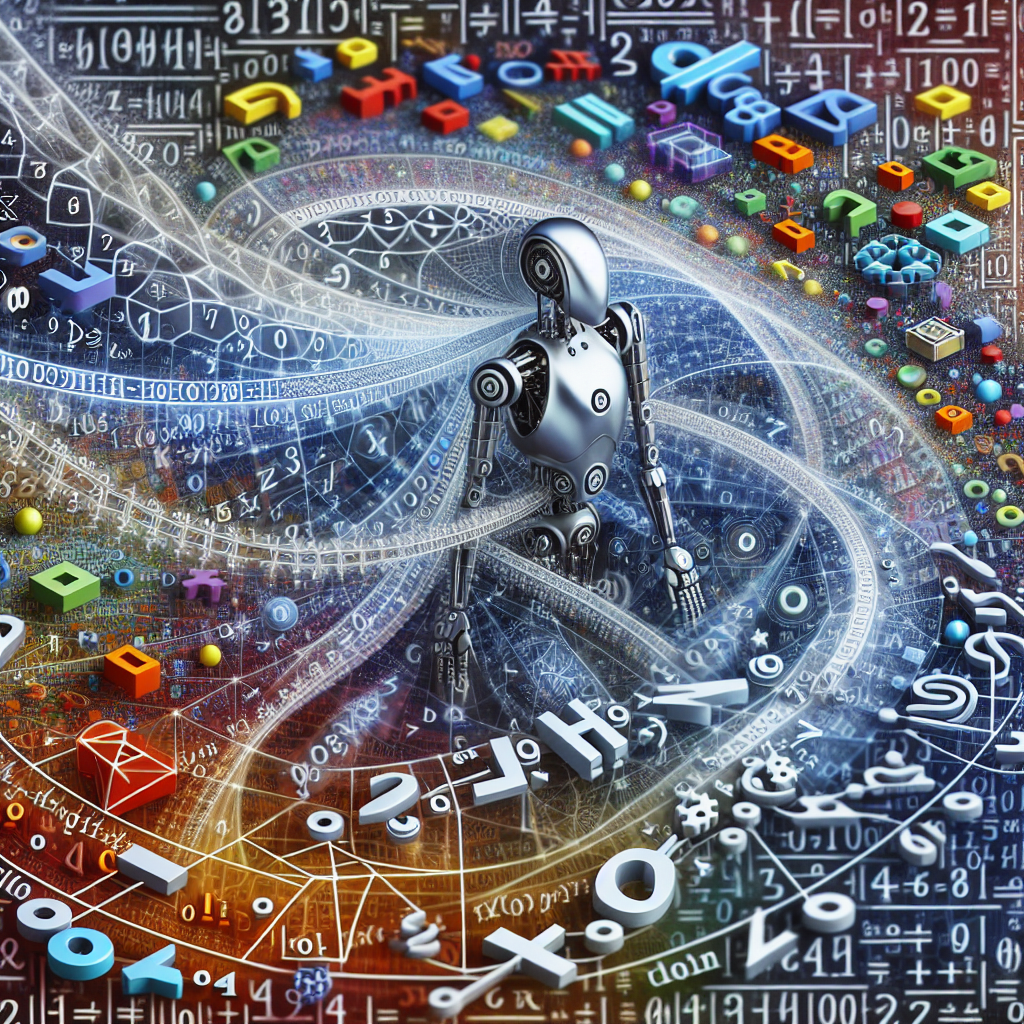Dancing on the Edge of Infinity: A Dive into the Exploratory World of Mathematics and AI
In the cosmic dance of numbers and abstraction, where the steps are as intricate as the most complex algorithms, we find ourselves teetering on the edge of what's conceivable. Today, we embark on an exploration that is as exhilarating as it is mind-bending, delving into the intricacies of mathematics, artificial intelligence, and the profound implications of their confluence.
The Quest for AGI: Beyond the Horizon of Imagination
The holy grail of artificial intelligence, AGI or Artificial General Intelligence, has long been the subject of both awe and controversy. The allure of a machine with the prowess to tackle any intellectual task a human can—this is the dream that dances in the minds of AI researchers and enthusiasts alike. But what sets AGI apart from the increasingly sophisticated AI models we witness today?
Grant Sanderson, the mathematical maestro behind the 3blue1brown YouTube channel, offers a tantalizing perspective. The journey to AGI isn't marked by a single, definitive threshold but is a continuum of brilliance. The prowess of an AI achieving gold in the International Math Olympiad, a feat requiring not just computational might but creative problem-solving, could be a signpost along the path to AGI. Yet, even this monumental achievement doesn't necessarily equate to AGI; it may just denote another realm where AI surpasses human expertise.
Is the emergence of AGI a matter of surpassing benchmarks in all conceivable domains, or is it about the ability to replicate the vast and varied tapestry of human intellect and occupation? The distinction between specialized intelligence and general intelligence remains a philosophical quagmire, one that continues to provoke thought and propel research forward.
Pedagogy in Play: Video Games as Teachers
In an era where education is no longer confined to the four walls of a classroom, the question beckons: why haven't video games risen to the pedagogical challenge as animated videos have? The marriage of fun and learning has always been an ideal yet elusive partnership. Games like "The Witness" tap into the non-verbal, puzzle-solving essence of mathematics, providing a model for how learning can be both engaging and profound.
Yet, creating a game that educates as effectively as it entertains is no small feat. It demands a confluence of skill, resources, and the delicate balance of compelling gameplay with educational rigor. As Sanderson muses, perhaps the complexity of game design and the difficulty in striking that elusive balance has hindered the widespread adoption of gaming as a transformative educational tool.
The Classroom Connection: Empathy as a Teaching Tool
In the digital age, content creators like Sanderson have revolutionized the way we learn and engage with complex subjects like mathematics. Yet, even as we celebrate the reach and impact of online education, we are reminded of a profound truth: there is no substitute for the classroom experience. The tactile sensation of chalk on a blackboard, the immediate feedback loop between teacher and student, the palpable tension before an epiphany; these are the quintessences of learning that cannot be fully replicated in the digital sphere.
Sanderson's aspiration to return to the high school classroom as a teacher affirms the irreplaceable value of in-person education. The empathy gained by walking a mile in the educator's shoes, he contends, is invaluable for content creators seeking to resonate with their audience. Whether through chalk dust or pixels, the heartbeat of education remains unchanged—it is empathy, connection, and the shared journey of discovery.
The Fabric of Reality: Mathematics and Its Renewal
The relentless march of mathematical discovery is a testament to the human spirit's insatiable curiosity. Yet, even as we stand on the shoulders of giants, we find ourselves asking: why is so much of mathematics a relatively recent development? Could the groundbreaking theories of information and chaos have been birthed in ancient times?
The unfolding of mathematical discovery appears deeply intertwined with the zeitgeist of each era. The need for commerce, the rise of technology, the expansion of human thought—all these factors act as catalysts, igniting sparks of genius and directing the flow of mathematical innovation.
Knotty Problems: The Serendipity of Mathematical Discovery
Knot theory, a fascinating branch of mathematics, emerged from Lord Kelvin's misdirected yet inspired musings on the structure of atoms. This anecdote is emblematic of the serendipitous nature of scientific inquiry. The vast, uncharted wilderness of mathematical problems beckons, but it is often the peculiar crossroads of personal passion and practical utility that dictate the paths we tread.
What prompts the pursuit of one mathematical question over another in a landscape so vast it defies comprehension? It is perhaps less a matter of systematic exploration and more a dance between random chance and focused ambition—a dance where each step draws the map of our mathematical legacy.
In the grand narrative of mathematics and artificial intelligence, we find an echo of our deepest yearnings for knowledge and understanding. As we step into the classroom or traverse the digital realms of learning, we are reminded that, at its core, the pursuit of education is an innately human endeavor, rich with empathy and driven by the insatiable desire to untangle the beautiful mysteries that compose our world.
Explore the world of Math and AI with 3blue1brown
In conclusion, this world where numbers waltz with neural networks, where classrooms and computer screens converge, is anything but mundane. It challenges us to reimagine the boundaries of our capabilities and redefine the essence of intelligence—be it artificial or all too human.
Related News
- The Elegant Chaos of AI Development: A Deep-Dive into the Future of Intelligent Systems
- Navigating the Brave New World of AI: A Zesty Analysis
- Unraveling the Enigma of Pure Mathematics: A Deep Dive into its Core and Significance
- The Accidental Genesis of a Math Maestro: A Deep Dive into the World of Educational YouTubing
- Unraveling the AGI Paradox: Navigating the Continuous Landscape of Intelligence
